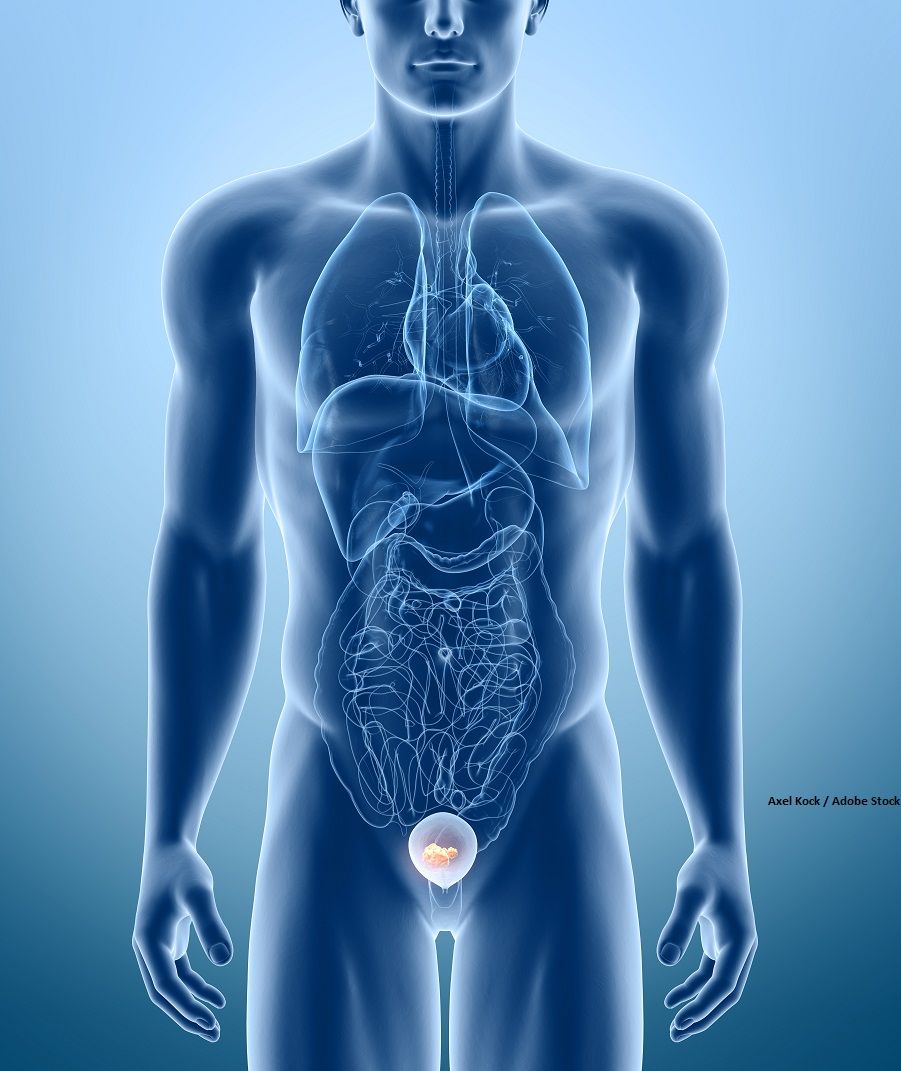Adjuvant Radiation Therapy Improves Local Survival in High-Risk MIBC
No toxicity-related discontinuations were seen with adjuvant radiotherapy among patients with muscle-invasive bladder cancer.
The 2-year rates for disease-free survival in the radiation and observation arms, respectively, were 71.6% and 58.7%.

The addition of adjuvant radiation therapy following radical cystectomy exhibited a survival advantage vs observation in patients undergoing treatment for muscle-invasive bladder cancer (MIBC), according to findings from the phase 3 Bladder Cancer Adjuvant Radiotherapy (BART) trial (NCT02951325) presented in a press briefing at the 2025 American Society for Radiation Oncology Annual Meeting.1
Specifically, among patients treated with radiotherapy (n = 77), the 2-year local recurrence-free survival (LRFS) rate was 87.1% vs 76.0% with observation (n = 76), with an HR of 0.43 (95% CI, 0.20-0.96; P = .04). Additionally, after a median follow-up of 47 months, 18% of patients experienced locoregional recurrence across both arms.
Additionally, the 2-year rates for disease-free survival (DFS) in the radiation and observation arms, respectively, were 71.6% and 58.7% (HR, 0.62; 95% CI, 0.36-1.05; P = .07). Two-year bladder cancer-specific survival (BCSS) rates in the respective arms were 79.6% and 65.0% (HR, 0.59; 95% CI, 0.33-1.10; P = .09), and the 2-year overall survival (OS) rates were 70.4% and 57.4% (HR, 0.78; 95% CI, 0.49-1.26; P = .31).
“Radiotherapy after cystectomy or removal of the bladder in patients with high-risk features of recurrence is safe with modern radiotherapy techniques,” Vedang Murthy, MD, DNB, DipEPP, professor and radiation oncologist specializing in urological cancer at Tata Memorial Hospital in Mumbai, India, said in the press briefing.1 “It can be implemented in most centers doing modern radiation; it does not need any specific equipment [or] extra resources.”
Patients in the phase 3 trial had high-risk features, including pT3 cancer or greater, node-positive disease; residual-positive tumors; and downstaging with neoadjuvant chemotherapy. They were randomly assigned 1:1 to receive observation or adjuvant radiation therapy consisting of 50.4 Gy over 28 fractions to the pelvic nodes and cystectomy bed. Patients were stratified by nodal status and receipt of chemotherapy.
The primary end point of the study was 2-year LRFS. The study also measured DFS, BCSS, OS, and safety.
A safety analysis of the study revealed that the BART regimen was well tolerated among patients with MIBC. Particularly, no toxicity-related treatment discontinuations were observed with the investigational regimen. Although grade 2 toxicities were higher among patients treated with radiation therapy at 17.5% vs 1.4% with observation, grade 3 toxicities occurred at a lower rate with radiation, at 1.6% vs 4.1% with observation. Additionally, the rates of severe late effects were similar between the 2 groups, at 8.4% with radiation vs 10.5% with observation.
The study was conducted to assess the impact of radiation therapy on OS among patients with MIBC who underwent cystectomy. Citing previous literature assessing chemotherapy against observation, Murthy highlighted that cisplatin following or preceding surgery conferred an OS improvement of approximately 3% to 8% among this patient population.
Murthy noted that nivolumab (Opdivo) conferred similar benefits, with a 6% to 8% benefit among these patients. Results from the phase 3 CheckMate 274 trial (NCT02632409), which evaluated the agent in patients with high-risk disease following cystectomy against placebo, exhibited a median OS of 69.5 months (95% CI, 58.1-not estimable [NE]) vs 50.1 months (95% CI, 38.2-NE) with placebo (HR, 0.76; 95% CI, 0.61-0.96).2 Additionally, the 2-year OS rates were 76.1% and 70.1%, respectively.
According to Murthy, although most recurrences following cystectomy are distant, locoregional recurrences still pose a threat and may not be well appreciated. He expressed that chemotherapy has not helped in reducing the probability of locoregional DFS in patients who have undergone a cystectomy.
References
- Murthy V, Maitre P, Pal M, et al. Bladder Adjuvant RadioTherapy (BART): clinical outcomes from a phase III multicenter randomized controlled trial. Abstract presented at: 2025 American Society for Radiation Oncology Annual Meeting; September 27-October 1, 2025; San Francisco, CA. Abstract 2.
- Galsky MD, Witjes JA, Gschwend JE, et al. Adjuvant nivolumab in high-risk muscle-invasive urothelial carcinoma: expanded efficacy from CheckMate 274. J Clin Oncol. 2025;43(1):15-21. doi:10.1200/JCO.24.00340